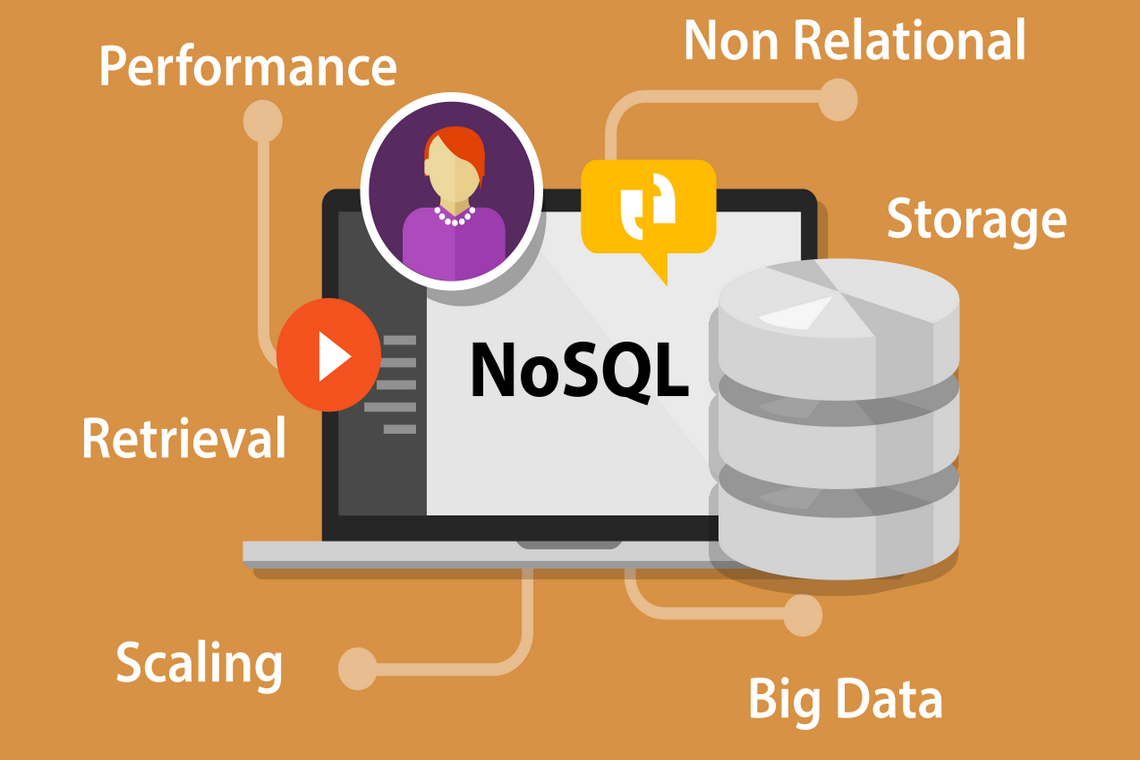A growing company has numerous challenges and opportunities, necessitating long-term planning. Some tools and technology may be the best fit for your application today, but they may not be the best fit for your application tomorrow. Choosing the correct database is also a component of the application, and it is a difficult decision for businesses to make.
What if you pick a database for your application based on the current position and a modest number of users? What will happen in a few years? The number of users may increase… If your website’s user base grows, you’ll run into scalability issues as well as a slew of other issues. If your site is unable to handle the increased volume of users, it will have a negative impact on your business, and your company may suffer as a result. You will have to invest more work, time, and money in the maintenance and migration of your application.
Among developers, there has always been a debate about which database is suitable for specific applications. What is the difference between relational and non-relational relationships? Both databases can hold data, but the way they’re created, the type of data they store, and how they store it differs.
In this article, we’ll look at various cases when non-relational databases may be preferable to relational databases for your application. We’ll go through some of the features of NoSQL, but keep in mind that there is no one-size-fits-all technology or database. Each one has advantages and disadvantages. To make a decision, you must first ask a few questions about your application’s requirements.
Why NoSQL?
Relational databases have been used as the principal data storing technology for more than four decades. Like a phone book, Structured Query Language (SQL) is a more structured, rigid system for storing data. They’re made for secure transactions and have a well-defined structure for storing data. NoSQL databases are designed to be used across large distributed systems. Traditional relational databases are significantly less scalable and slower at managing very big data loads. NoSQL databases, unlike relational databases, do not use typical tabular relationships. Instead, depending on the software, NoSQL databases provide a variety of different ways to query and store data.

Instead of the columns and rows used by relational databases, NoSQL databases store data in JSON documents. To be clear, NoSQL refers to “not only SQL” rather than “no SQL.” This means that a NoSQL JSON database can store and retrieve data without using SQL. You can also combine JSON’s flexibility with SQL’s power to get the best of both worlds. As a result, NoSQL databases are designed to be adaptable, scalable, and quick to respond to the data management demands of today’s businesses.
Types of NoSQL databases
- Graph Databases – A graph database is a type of NoSQL database that stores data as collections of nodes and edges rather than columns and rows. Each edge defines a relationship between two nodes, whereas each node represents a data point. To show how data points are connected, graph databases use graph theory models. This database type is excellent for storing data with complex, indirect links as well as finding the shortest path between two data points.
- Document Databases – are primarily designed for storing data in the form of documents, such as JSON documents. For example, these systems can be used to store XML documents.
- Wide column databases – employ relational databases’ tabular format, but allow for a lot of variation in how data is labeled and displayed in each row, even within the same table Wide-column databases, like key-value stores, contain some basic structure while retaining a lot of flexibility.
- Key-value stores – A key-value database is a simple database that uses an associative array similar to a map or dictionary as its core data model, with each key corresponding to one and only one value in a collection.
Customer experience has rapidly become the most crucial competitive difference, ushering in an era of massive transformation in the corporate world. As part of this change, businesses are communicating digitally on an unprecedented scale — not only with their consumers, but also with their staff, partners, vendors, and even their products. The internet and other 21st-century technologies enable this interaction, and cloud, mobile, social media, big data, and IoT applications are at the heart of the revolution.
Today’s applications share the following attributes:
- Support a massive amount of users at the same time (tens of thousands, perhaps millions)
- Deliver extremely responsive user experiences to a global clientele.
- There should be no downtime
- Organize semi-structured and unstructured data
- With frequent upgrades and new features, you can quickly adjust to changing requirements.
Building and running these enormously interactive applications has necessitated the development of new technology. The new business IT architecture must be significantly more nimble than ever before, and it necessitates a real-time data management system that can handle unprecedented scale, speed, and data variability. Due to the inability of relational databases to meet these new needs, businesses are turning to NoSQL database technologies.
Where do SQL databases fall short?
Long before the internet, the cloud, big data, mobile, and today’s massively interactive enterprise, relational DBMS (database management systems) were born in the era of mainframes and business applications. These databases were designed to function on a single server, and the larger the server, the better. The only option to increase the capacity of these databases was to scale up the servers, which meant upgrading the CPUs, memory, and storage.
The exponential growth of the internet and the advent of web apps led to the development of NoSQL databases. These databases were created to fulfill the needs of a new generation of business needs:
Issues:
- Data is stored in relational databases in a predefined and fixed structure. It means you’ll have to specify your data schema in terms of tables and columns before you start developing. Every time the requirements change, you must update the schema. Hence it causes a lot of problems with agile development which requires fast implementation.
- Scalability – Traditional master-slave design is the foundation of relational databases. Scaling up is adding additional processors, RAM, and hard discs to your server in order to manage greater load and expand capacity. Instead of using a single huge server, you’ll need to split the databases into smaller bits and distribute them across many hardware servers. This is referred to as sharding, and it is a relatively complex process in relational databases.
- Centralized – For write operations, relational databases use a centralized application that is location-dependent (e.g. a single site). This impedes a company’s ability to distribute data on a global scale
- Redundancy – When developing an application, hardware failure is a major worry with SQL databases. It can be addressed at the database architectural level, rather than asking developers, DBAs, and operations employees to build their redundant solutions. The NoSQL database’s masterclass architecture allows numerous copies of data to be maintained across different nodes. If one node fails, a copy of the data is stored on another node for easy and quick access which leads to zero downtime.
- Big data applications – SQL struggles with massive amounts of data. There are high chances that the data will bottleneck as all the components increase
Enterprises must innovate to be competitive in today’s experience-driven digital economy and they must do so faster than ever before. Developers must produce apps and services faster than ever before because this innovation is focused on the development of new web, mobile, and IoT applications. Because modern applications change at a far faster rate than legacy applications like ERP, speed and agility are essential. Relational databases are a major hurdle since, due to their inflexible data model, they don’t enable agile development very well.
Disadvantages of NoSQL:
- NoSQL databases have a very narrow focus because they are primarily built for storage and provide very little functionality. In the area of Transaction Management, relational databases outperform NoSQL databases.
- Management problem – Big data tools are designed to make managing enormous amounts of data as simple as possible. But it isn’t that simple. Data administration in a NoSQL database is far more complicated than it is in a relational database. NoSQL, in particular, is known for being difficult to set up and even more difficult to administer daily.
- Compatibility – New databases have their own query language, which isn’t yet 100 percent compatible with relational databases’ SQL. Work query support in a NoSQL database is more difficult.
- Lack of Standardization – There are a lot of NoSQL databases, but none of them follow the same standards as relational databases. These databases are likely to have an unpredictable future.
- Backup – For some NoSQL databases, such as MongoDB, backup is a major weakness. MongoDB does not include a way for backing up data in a consistent manner
- Large document – Data is stored in JSON format in some database systems, such as MongoDB and CouchDB. This means that documents are quite huge (due to BigData, network bandwidth, and speed), and having descriptive key names actually harms the document size by increasing it.
To conclude
Choosing the right database management system for your company might be time-consuming and difficult. While NoSQL can handle both huge and small amounts of data, it’s important to think about what you want from the system and how much time you’re willing to put into maintaining it. NoSQL may be a good fit for you if you need information storage flexibility without requiring code changes or additional IT infrastructure.
Traditional SQL systems, on the other hand, will likely provide greater performance with more sophisticated toolsets accessible if queries and security features are essential components of your solution. SQL is your friend if you need to store transactional data. Relational databases were designed to handle transactions and excel at it. If your data is analytical, consider NoSQL. SQL was never designed for data analytics, which can be a problem when dealing with massive amounts of data. Data based on Gartner’s DBMS report in 2021 suggests that the top 5 relational databases still generate 80.6% of all DBMS revenue. The remaining 20% is where the NoSQL databases vendors play which is currently a $16B market. These companies have carved out some success – and garnered a lot of marketing enthusiasm in a market dominated by RDBMS.
Before deciding between NoSQL and SQL, you must first determine what you require from your database.
New to Graph Databases?
Our warts-and-all overview of graph databases covers everything from RDF, property graphs, linked data and graph schema languages and is a good place to start for those looking to learn more.
